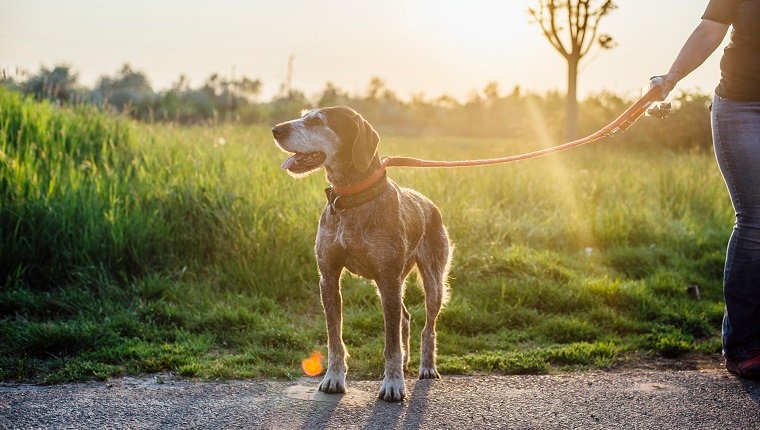
With the great outdoors beckoning, ensuring your dog’s safety during hikes is necessary, especially when it comes to tick and flea prevention. By implementing effective measures, you can protect your furry friend from these unwanted pests and the diseases they carry. This guide will provide you with valuable insights and actionable steps to create a safe and enjoyable hiking experience for you and your canine companion. Let’s explore how to keep your dog safe while enjoying nature’s beauty.
The Critical Role of Proactive Prevention
Proactive prevention acts as your first line of defense against ticks and fleas when hiking with your dog. By implementing effective measures before your outdoor adventure, you can significantly reduce the risk of your furry companion experiencing discomfort or health issues linked to these pests. Regularly treating your dog with preventive medications and checking for ticks after hikes can make a noticeable difference in their overall well-being while minimizing the likelihood of infestations.
Choosing the Right Preventive Medications
Selecting the appropriate preventive medications tailored to your dog’s specific needs is vital for maintaining their health. Options include topical treatments, oral medications, and collars that effectively repel or kill ticks and fleas. Consult your veterinarian to explore the best products suitable for your dog’s age, size, and existing health conditions, ensuring comprehensive protection against parasites.
Understanding Local Tick and Flea Populations
Being knowledgeable about the local tick and flea populations is important for ensuring your dog stays safe during outdoor activities. Areas with high humidity and dense vegetation often harbor larger populations of these pests, while some species, like the deer tick, can carry Lyme disease. Researching local reports or speaking with other hikers can provide valuable insights into the prevalence of these pests in your favorite hiking destinations.
Your awareness of local tick and flea populations can help you strategize your hiking locations and the timing of your outings. In certain regions, ticks are more active during specific seasons, which can influence your decision to hike during peak activity times. For instance, spring and early summer often see increased tick activity, making it important to remain vigilant and perform thorough checks on your dog after each hike. Additionally, consider exploring trails that are well-maintained and less populated by tall grasses or shrubs, where ticks are more likely to thrive.
Essential Gear for Hiking with Your Dog
Equipping yourself and your dog with the right gear is vital to ensure a safe and enjoyable hiking experience. This includes not only basic necessities like water and food but also specialized gear that can help protect against ticks and fleas. Adequate preparation means taking the necessary steps to keep your furry friend safe from potential threats while enjoying the great outdoors together.
Tick-Repellent Apparel and Gear
Selecting tick-repellent clothing for your dog, such as jackets, vests, or bandanas treated with permethrin, can significantly reduce their chances of encountering ticks. Some manufacturers create special dog gear designed to be both fashionable and functional, which provides an effective barrier against insects. Pairing these with tick-repellent sprays or topical treatments can enhance your dog’s defense, allowing you both to explore wooded or grassy areas with less worry.
The Importance of a Secure Leash and Harness
A reliable leash and harness system contributes to your dog’s safety during hikes by preventing them from straying into areas where ticks and fleas thrive. Opt for a harness that distributes pressure across their body instead of just around the neck, as this allows for better control and comfort. Additionally, strong leashes with a secure grip ensure you maintain command of your pet, even in unexpected situations. This is especially important in environments where wildlife is present, as your dog might be tempted to pursue local creatures.
Utilizing a secure leash and harness not only protects your dog from potential dangers but also gives you peace of mind while navigating challenging terrain. A properly fitted harness minimizes the risk of escape, which is necessary in high activity areas or when encountering aggressive wildlife. Plus, many harnesses have reflective elements, enhancing visibility during early morning or late evening hikes, further safeguarding your dog from unexpected accidents. Combining these elements leads to a seamless hiking experience where both you and your dog can enjoy nature without unnecessary stress.
Recognizing the Signs of Infestation
Identifying the signs of tick and flea infestations is vital for maintaining your dog’s health. Fleas typically leave behind black specks—flea dirt—which are tiny, dark deposits. Ticks, on the other hand, can be seen attached to your dog’s skin, appearing as small bumps. You might also notice increased scratching, biting, or grooming behaviors, which signal discomfort and potential infestations. Observing these symptoms early allows you to act swiftly to protect your furry friend from the complications these pests can cause.
Symptoms of Tick and Flea Bites in Dogs
Common symptoms of tick and flea bites in dogs include excessive scratching, redness, inflamed skin, and hair loss. You may also notice your dog acting more lethargic than usual or displaying signs of anxiety. If a bite becomes infected, it can result in additional symptoms such as swelling and a discharge. These indicators can vary from mild to severe, and any significant changes in behavior or appearance should prompt a visit to the vet.
How to Conduct a Thorough Post-Hike Check
A comprehensive post-hike check for ticks and fleas involves systematically inspecting your dog’s entire body. Focus especially on areas where pests often hide, such as inside the ears, around the neck, between the toes, and under the collar. Utilize a fine-toothed comb to help dislodge any fleas and check for any swollen areas that may indicate attached ticks. Performing this check immediately after returning home can ensure any pests are caught early, reducing the risk of infestation and related health issues.
To carry out an effective inspection, find a well-lit area where you can closely examine your dog. Start by patting down their fur to feel for any unusual lumps indicating ticks, and be thorough in your search. Use the comb to comb through the fur, especially around the underbelly and behind the legs. An engaging approach, keeping your dog calm with treats or reassuring words, can turn this task into a bonding experience rather than a chore. After identifying any ticks, use specific removal tools, ensuring you extract them fully without leaving parts embedded in your dog’s skin.
Strategies for the Trail: Reducing Exposure
Implementing effective strategies while on the trail minimizes your dog’s exposure to ticks and fleas. Start by choosing hiking paths that are well-maintained and open. Dense vegetation, tall grasses, and brushy areas can be hotspots for these pests. Opting for trails that are frequented by other hikers can also be beneficial, as the increased foot traffic tends to keep pest populations under control.
Trail Selection: What to Look For
Prioritize trails that are cleared and wide, as these features allow for better visibility and easier control over your dog’s movements. Seek out paths with less underbrush and fewer tall grasses, since these environments offer ideal hiding spots for ticks. Additionally, consider the time of year and local tick activity reports to avoid peak infestations while planning your hikes.
The Best Practices for Minimizing Risk
To minimize the risk of ticks and fleas, establish a routine for your dog before and after each hike. Apply a vet-recommended topical or oral tick preventive before hitting the trail and inspect your dog’s coat immediately after the hike. Wearing protective clothing such as a tick collar can add an extra layer of defense, while keeping your dog on a leash will limit their exposure to potentially infested areas. Regular grooming sessions and frequent checks during hikes can help spot any ticks early, while ensuring your dog’s comfort and safety.
In practice, after each hike, conduct thorough tick checks in your dog’s fur, focusing on hidden areas such as under the ears, between toes, and around the tail. Bathe your dog with a tick-repellent shampoo afterward to wash away any that may be lingering. Additionally, taking a few minutes to brush your dog can help in catching any potential hitchhikers before they attach. Consistency in these best practices not only makes outdoor adventures safer but can also become a bonding ritual between you and your furry companion.
Emergency Preparedness: What to Do If Your Dog Gets Infested
Reacting swiftly when your dog encounters ticks or fleas is vital for their well-being. Start by thoroughly inspecting their fur and skin, especially in areas like the ears, between toes, and under the collar. If you find any, remove them immediately using a proper tick removal tool or a pair of fine-tipped tweezers, ensuring that the entire tick is extracted. Clean the bite area and monitor your dog for any signs of irritation or infection. Familiarizing yourself with these steps can help mitigate discomfort and prevent further complications.
First Aid Measures for Tick and Flea Bites
For tick and flea bites, your immediate response should involve cleaning the area with mild soap and water, followed by applying an antiseptic. If you notice unusual swelling or redness, applying a cold compress can help soothe the irritation. Keep an eye on the bite sites for signs of infection or allergic reactions. Regularly checking your dog’s skin and fur after hikes can aid in early detection and treatment.
When to Seek Veterinary Assistance
Consulting a veterinarian is necessary when you notice persistent and severe symptoms following a tick or flea bite. Symptoms such as excessive itching, swelling, lethargy, or any signs of infection warrant professional intervention. Additionally, if a tick is embedded for more than 24 hours or if you’ve removed a tick that appeared to be engorged, seeking veterinary advice can help prevent diseases like Lyme disease or Rocky Mountain spotted fever.
Advanced veterinary care might be required based on your dog’s size, age, and overall health. Even if the infestation appears minor, specific breeds can react more severely to ticks and fleas. If you observe changes in appetite, behavior, or energy levels after an infestation, it’s best to consult your vet promptly. Early treatment can lead to a quicker recovery and help assure your pet’s long-term health.
Conclusion
Considering all points, ensuring a safe hiking experience for your dog involves proactive measures against ticks and fleas. You should regularly apply vet-recommended preventive treatments, check your dog for pests before and after hikes, and minimize exposure to tall grasses or wooded areas. Maintaining a clean environment at home and after outdoor adventures will also help reduce infestations. By taking these steps, you can enjoy your outdoor adventures with peace of mind knowing your furry companion is protected from tick and flea risks.






